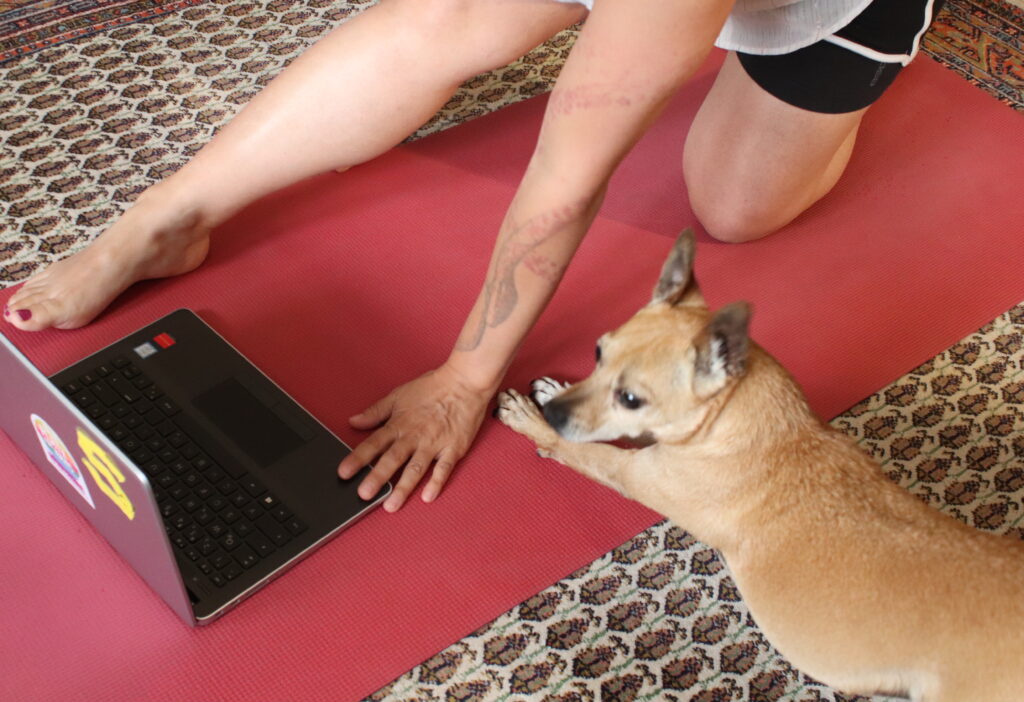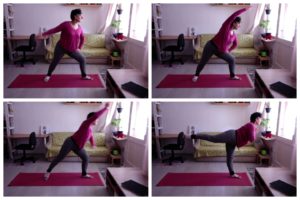If we’ve learned one thing from the past year and a half, it’s that it’s possible to work from home. Long daily commutes became a thing of the past. Will we go back to that or listen to the communities of people fighting for accessible working conditions? The world does not stop because people work from the comforts of their homes. Right from the beginning of the pandemic I started giving my yoga classes online. As I got used to it, it became habit and I almost forgot what it was like to teach a yoga class in person. Now that measures are loosening, we have the opportunity to go back to the studio. And with the warmer weather, we can teach outside. But this is not always the preference of the people who attend my classes. So what are the benefits of yoga online?
Benefits of Yoga Online
You can join from anywhere
Throughout the pandemic, a number of international students have joined my classes. They’ve joined from Glasgow, Miami, Toronto, San Francisco, Barcelona, Vienna and Amsterdam. The class time (Sundays at 18h CEST) is quite conducive to people’s schedules who join from these various cities. Most of these international participants are people who’ve previously attended my classes in person, but some are new!
From the comfort of your own home
There’s always the option to turn one’s camera off during an online yoga session. If a participant feels self-conscious, or simply wants privacy while they practice yoga, with a click of a button they can achieve it. No more worries about interrupting a class, because you have to go to the bathroom or need a glass of water. Bodily noises such as stomach gurgles or farts are also hidden behind the mute button. If someone needs to take their time with a pose, or needs specific props, or would prefer to use a chair that day, those items are more easily within reach. Your favourite furry friend can also join you!
Eliminating the commute
If a participant is already at home, there’s no need to go anywhere to join a class. All one has to do is turn on the computer and sign in to the session. The time taken commuting to the studio is eliminated. If the weather is bad, there’s no need for it to cause a lack of motivation. There are therefore less obstacles in the way to joining the class.
Reducing spread
Of course, during the height of the pandemic, we were obliged to practice yoga online. The studios were closed. But now that we have the opportunity to go back to the studio, we can still choose to practice online in order to reduce the spread of the virus. Practicing yoga with masks on causes too much restriction for breathing exercises. And opening windows regularly cools down the room too much during cold winter months. Nothing reduces the spread as much as eliminating contact. This is something we can be sure about. For participants with compromised immune systems or pandemic-related anxiety, it makes it safer to practice yoga.
There are many things lost in online yoga classes – in-person connection to community, better visibility of the yoga teacher and participants, lack of connectivity problems, etc. But there are also many benefits of yoga online that are not achievable in-person. And we still have many people in our community who are not yet fully vaccinated. For now, the Sunday yoga queers & friends commnunity yoga class will continue online.
Juli offers Svastha Yogatherapy Vinyasa Flow yoga inspired classes at English Yoga Berlin. This queer and trans community yoga class is also open to friends and allies. Our yoga Kreuzberg Berlin classes are open for and welcome to beginners, as well as people struggling with chronic pain. Juli also offers private yoga classes one on one.









